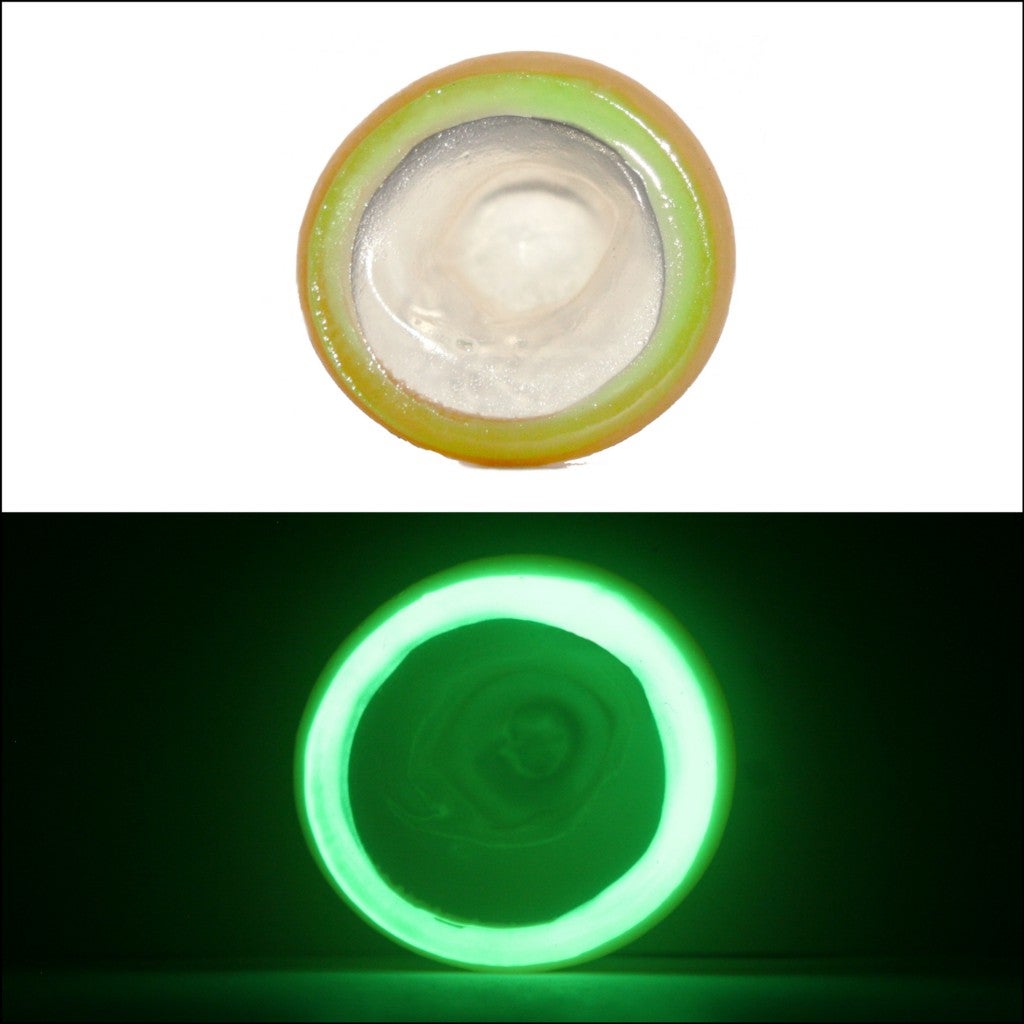“I’d gone to a party one night and heard some kids complaining about it, and I thought it could be a big idea,” Bill Mistler remembered.
The complaints in question had to do with one of the least beloved technologies — the condom — and the problem was as old as the condom itself: In the heat of the moment, how do you know if you’re putting on a condom the right way? While turning on the lights and slowing down might seem like an easy fix, it turns out, unsurprisingly, that nearly a third of fornicators aren’t that patient. Researchers have found that 30 percent of both men and women apply condoms inside out, which can result in not just a loss of erection, but an increased risk of STIs and pregnancy.
Mistler, an engineer with an MBA (among other degrees), had logged more than 200 patent ideas in his ever-growing notebook in the past decade, but none had involved prophylactics. (In fact, none of his ideas had even been patented.) But the conversation at the party in 2008 stuck with him, and he became convinced that he could solve a problem that had bedeviled condom companies for years.
In 2004, for example, a company patented a condom with two ribbons that, when pulled down, unrolled the condom in the right direction. But that added too much labor for users eager to hop in the sack. Then there was the Japanese manufacturer that created a condom with a colored tip, but it was still impossible to see on first glance which way to unroll the condom.
Despite their innovation, both designs lacked one critical feature: ease. Mistler’s solution aimed to simplify things, by inserting a ring inside the condom to indicate which way it should unroll. After sketching out some plans, he felt confident enough in his design to get in touch with Adam Glickman, a veritable condom king, whose career in the industry stretched back to the 1980s, when he shilled prophylactics to fellow students at Tufts out of discreet matchboxes.
In 1991, Glickman moved onto the big leagues by launching Condomania, the country’s first condom-only store, in New York City; it was followed by eight locations around the country. He sold the business in 2012, transitioned into consulting work and partnered with entrepreneur Frank Sadlo to create “They-Fit” condoms, intended to address another huge problem in condom design: that one in eight men chose the wrong size. It provided men with a kit to measure their member and then select one of 66 sizes for a more precise fit. (They sold the business to Malaysian condom manufacturer Karex for $1.3 million in 2016, but the condom hasn’t been approved by the FDA.)
When Mistler approached Glickman with his ring idea, Glickman knew he had his next big project. Glickman was familiar with the inside-out design flaw from years in the condom business and knew it was a large public health issue thanks to members of the Condom Use Research team at Indiana University’s Kinsey Institute. Their work on condom use in high pressure situation revealed, unsurprisingly, that “rushed conditions” often factored into condom misuse. “My 25 years told me if there was an elegant solution, it would sell,” Glickman says.
“We just really believe… this absolutely is not only a solution; it’s a simple solution,” adds Mistler. “It takes away absolutely any of the uncertainty.”

Even though both Glickman and Mistler were confident in their product, the prototyping and FDA approval process proved to be taxing. While Mistler had initially gotten the patents for two condom ideas — one with a glow-in-the-dark ring you could see and one with a ring you could feel— the manufacturing of tactile bumps proved too difficult. The pair turned their attention to the glow-ring feature and designed what would ultimately become the “O-Ring” condom.
When the application finally got submitted to the FDA after dealing with much bureaucracy, the government returned it with a recommendation for more lab tests. Although glow-in-the-dark condoms (which Glickman also had a hand in designing), have been approved by the FDA for more than 20 years, the FDA wanted to make sure that indicia, the chemical used in O-Ring’s luminescent ring, wouldn’t decrease the condom efficiency.
Finally, on June 7, the O-Ring team got notice that the FDA had approved their product. While the Kinsey Institute does not endorse products, they posted a press release when they found out O-Ring had used their research as an “impetus” for the product. “It seems intuitively that the condom could be effective,” said William Yarber, a Kinsey research, adding the caveat that there haven’t been clinical trials to prove the O-Ring’s effectiveness. “There’s anecdotal [evidence] but there’s not science to show it.”
Now the challenge of breaking into an multibillion-dollar market—dominated by only a few main players—awaits. It’s one of the reasons Mistler and Glickman are speaking with a number of major companies to partner with on either licensing or distribution. If a partnership doesn’t happen, they’re prepared to set up their own manufacturing and distribution using a Chinese factory that could turn out tens of thousands of condoms per month.
“The goal is to have it be used by as many people as possible,” Mistler says.
After discovering a cheaper way to manufacture their tactile idea, Mistler hopes that they’ll also be able to move forward with that project in the future. While the glow in the dark O-Ring should have an impact, a tactile condom would allow for an even simpler process and make the technology accessible to the visually impaired. Mistler has patented both designs in seven countries and the European Union.
“We’re still very convinced it’s worth its weight and worth the money we spent,” says Mistler of the patenting process. “I never thought I’d be involved with the condom, but it’s been very exciting.”
